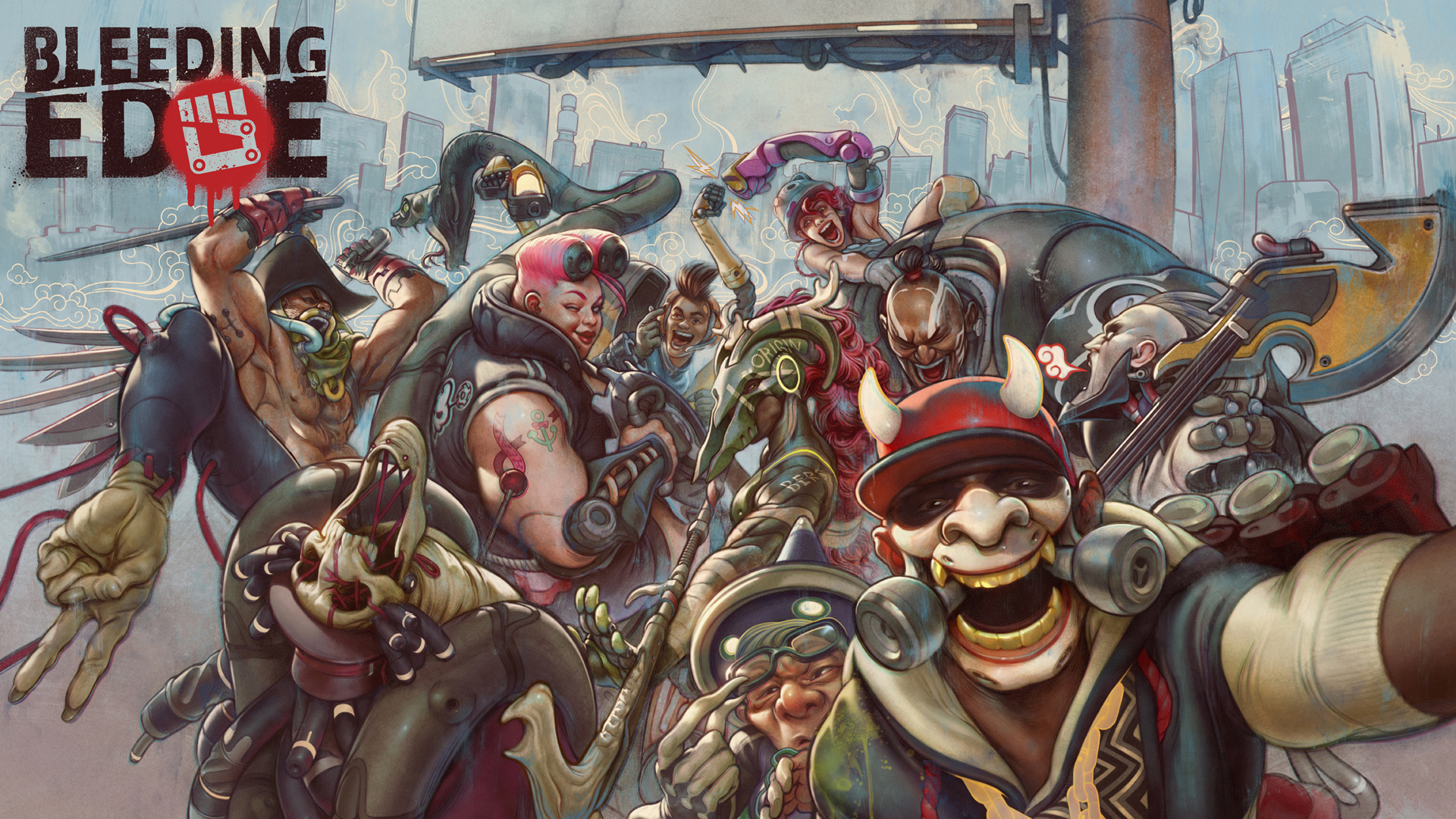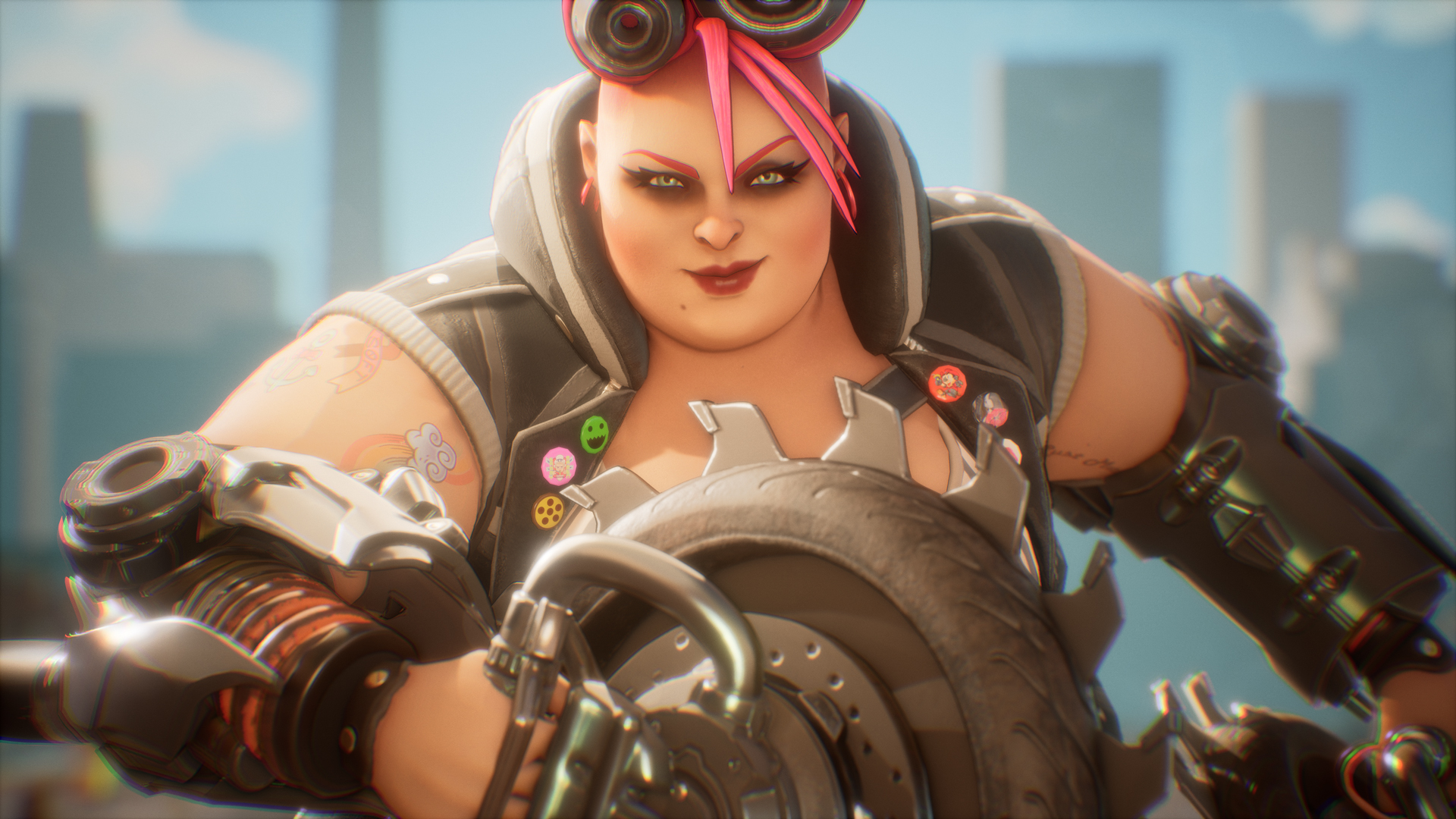Hands-on with Bleeding Edge, Ninja Theory's messy love letter to Overwatch
Bleeding Edge seems curiously comfortable with following the trends rather than setting them.

When Bleeding Edge unfortunately leaked a few days before E3 2019 was due to begin, the reaction was not kind. Ninja Theory, the acclaimed studio behind Hellblade, Enslaved, and DmC: Devil May Cry, was acquired by Microsoft last year, and this is the first game born of the collaboration?
On the surface of it at least, Bleeding Edge had all the makings of the kind of free-to-play hack-job that a large corporation would force a creative studio to get out the door as quickly as possible. It's not like there isn't precedent set for this in a sense, the way Fable Legends was handled still hangs over Microsoft like a dark cloud. Of course, Ninja Theory has since insisted that Bleeding Edge has been in development for over half a decade but, after getting the chance to get my hands on it, I'm still not entirely sold on the concept.
Bleeding Edge hands-on
Bleeding Edge is a 4v4 brawler which wears its inspirational debts to Overwatch, Smite, and other character-based multiplayer games on its sleeve, but my first impressions of the game are still middling at best. For the studio that has given us so many forward-thinking and imaginative titles, Bleeding Edge seems curiously comfortable with following the trends rather than setting them.
To start on a more positive note, though, let's be clear that Bleeding Edge's ace card is undoubtedly its cast of wild and wonderful characters. While certain striking similarities to a number of heroes in Overwatch's roster comes across as suspicious to say the least, Ninja Theory has clearly had a lot of fun in creating some of the kookiest battle combatants it could come up with.
There are easily identifiable counterparts to Genji, Reinhardt, and Zarya, for example, but each fighter also bears their own wholly unique traits and characteristics which just about elevates them beyond wallowing in these reductive comparisons. Bubblegum, for instance, is a brawny Tank hero with short, neon pink hair and bottomless self-confidence (remind you of anyone?), but before you can say "Ogon' po gotovnosti", we learn that she also wields buzzsaws for punching gloves and rides around on a giant mechanical unicycle. Not all of the Bleeding Edge heroes have their template borrowed from other games, either, but one does wish Ninja Theory had applied its knack for original character design to the entire roster, rather than starting from a place of reverent imitation.

Upon playing a full match of the game's Control mode (where two teams battle it out over a series of capture points), another point of contention is the moment-to-moment nature of Bleeding Edge's combat, which doesn't quite land in the way you'd hope it would from a Ninja Theory game. As you probably have already guessed, each character has their own set of abilities and passive traits, including two super moves, which align with classic RPG roles of DPS, Tank, and Support classes. I played as El Bastardo, a damage-focused tank with two machetes designed to deal heavy damage to multiple targets at once. While there was fun to be had in his ballet of swordsmanship, the kinaesthetics of every clash with an enemy felt strangely stilted.
In better news, every character in Bleeding Edge also has their own unique mount that can be deployed to hop from one section, and there's a MOBA-style element of strategy in the way players are encouraged to move around the map and counter enemy positioning. That also establishes a healthy culture of teamplay and class synergising; where lone wolves are dooming their entire squad to failure, and a strong, reactive composition of heroes can bring decisive victory. Perhaps, in this way, once the game gets into the community's hands and a competitive meta bubbles to the fore, Bleeding Edge will find the titular edge that my preview was lacking in.
Weekly digests, tales from the communities you love, and more
The developers from Ninja Theory's that were on hand to walk me through the game at E3 were enthusiastic to let us know about their commitment to a vibrant colour palette, but – in this day and age – popping colours and bright hues are no longer enough to help your game to stand out from the crowd. If anything, it's starting to make them to blend in with each other. Again, Ninja Theory clearly have a lot of love for Overwatch, and it shows, but that's hurting Bleeding Edge's own identity as a compelling piece of multiplayer entertainment. I have hopes that the game will carve out that identity through players' own interactions with it, but I'm also wary about whether this could mark a rare misstep for a studio that has yet to let its fans down. You can test out the game for yourself, and see if you agree, when the Bleeding Edge alpha hits PC and console later this month.
Want to see what else was announced this week? Then be sure to check out our roundup of all of the E3 2019 games revealed so far.
I'm GamesRadar's Features Writer, which makes me responsible for gracing the internet with as many of my words as possible, including reviews, previews, interviews, and more. Lucky internet!



